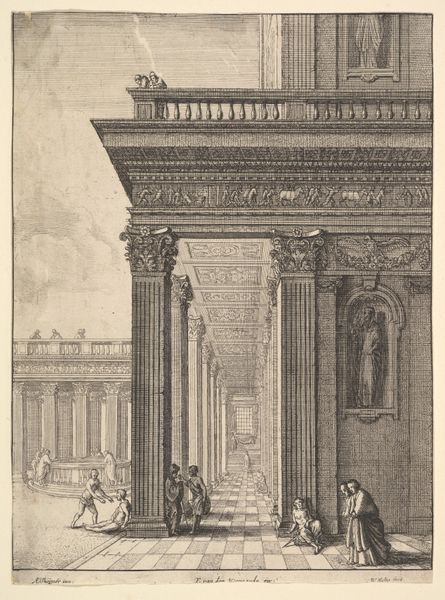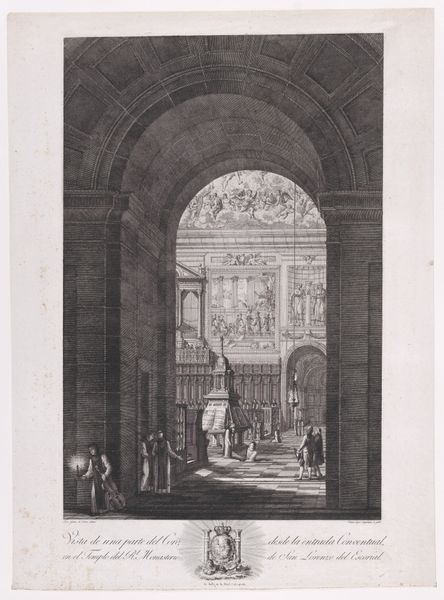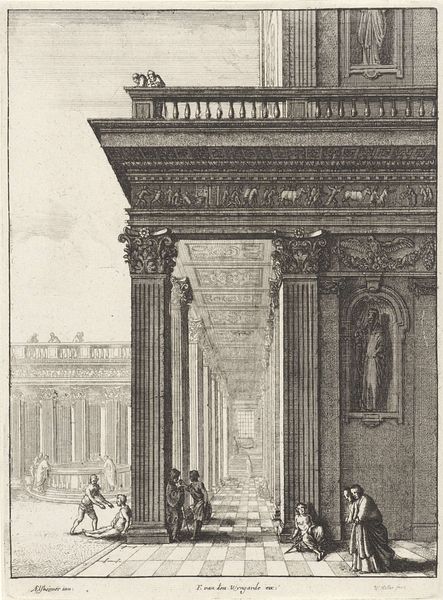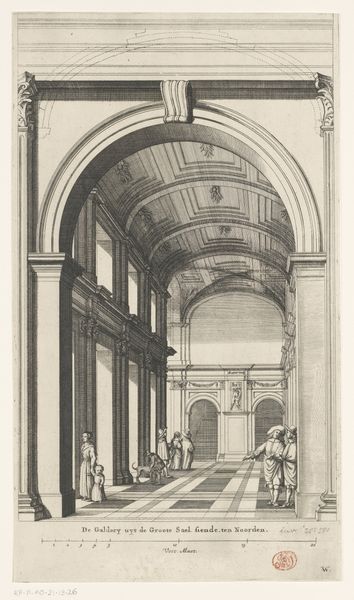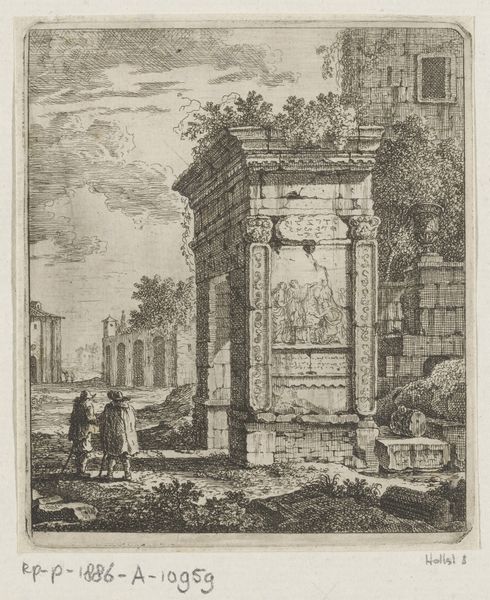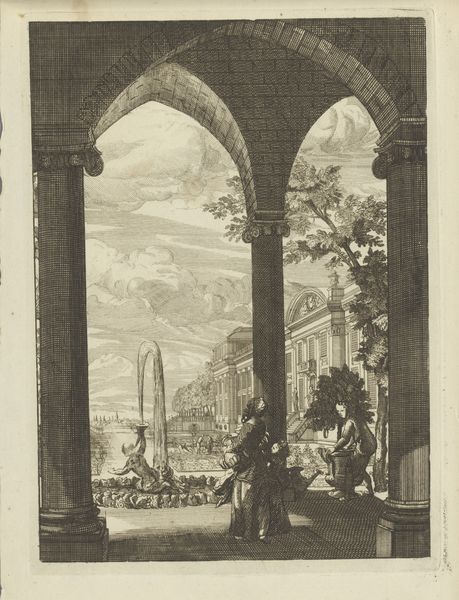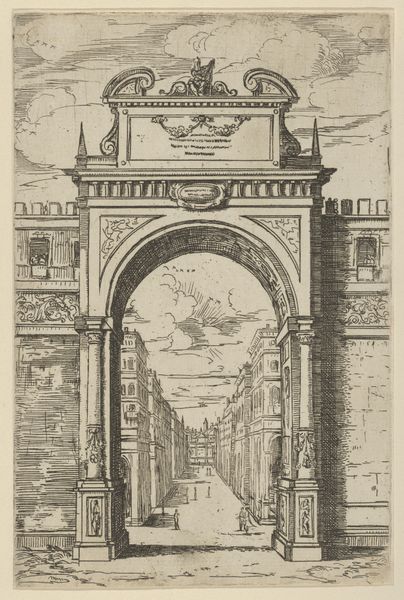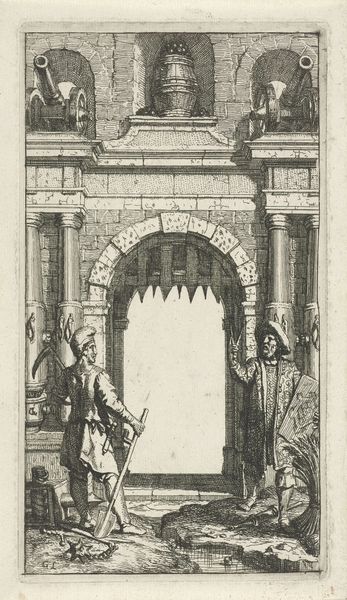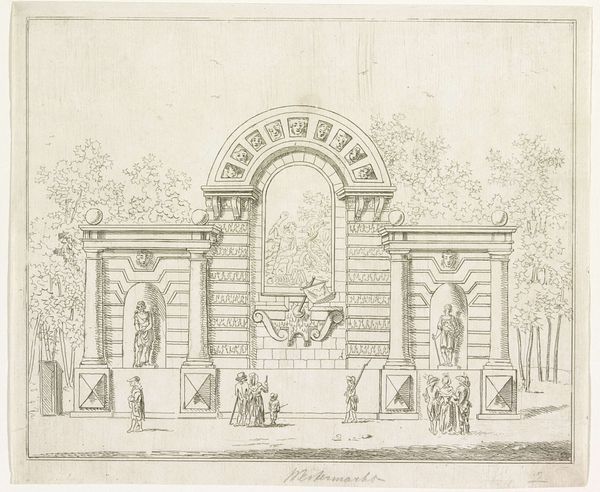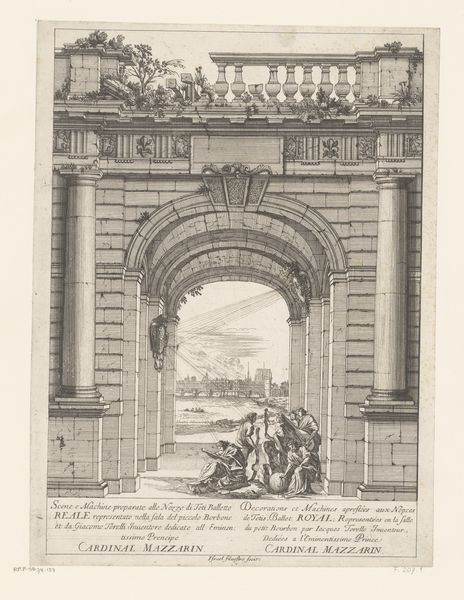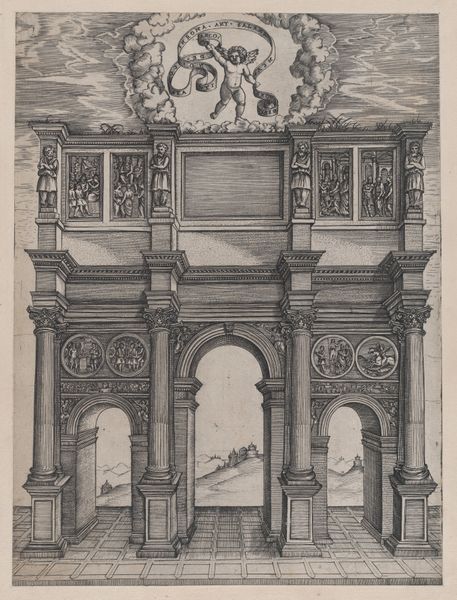
print, engraving, architecture
#
neoclacissism
# print
#
history-painting
#
engraving
#
architecture
Dimensions: 165 mm (height) x 111 mm (width) (plademaal)
Curator: Let's take a moment to examine "Holbergs sarkofag i Sorø Kirke," an engraving made by J.F. Clemens between 1770 and 1772. The work currently resides in the Statens Museum for Kunst. Editor: It has such a severe feeling! The lines are so precise and stark, like looking at a blueprint for death. The architecture really dominates the scene, dwarfing the people. Curator: Precisely. Clemens's engraving exemplifies Neoclassical aesthetics, a return to order and reason. The artist carefully renders the tomb’s architectural elements, emphasizing symmetry and clear lines reflecting the enlightenment era interest in classical design. Editor: Yet, something about the scene disturbs me. It feels performative. These people solemnly viewing a coffin, maybe feeling they’re playing the part in some civic ritual. It feels divorced from genuine grief. And is this inscription at the bottom really necessary? Curator: You highlight a crucial tension. The act of commemorating Holberg, a prominent figure in Danish history and literature, becomes almost a staged event. Holberg was a playwright, historian, and essayist who, using enlightenment ideals, aimed for political reform to affect social structure and the public sphere. Editor: Yes, and this work—a commemorative engraving of the memorial tomb! It's almost a self-aware acknowledgement that history is shaped not just by individuals, but by the symbols, the constructed narratives, surrounding them. It also suggests art has a fundamental, inseparable role in maintaining the sociopolitical status quo. Curator: Well said! By framing Holberg's burial in such a grand, architecturally pristine style, Clemens reinforces the desired historical narrative about his life and legacy, presenting him as a figure deserving of immense reverence. Editor: Perhaps Holberg would be slightly amused by such serious staging. Though this could be a cynical view, it feels as though the people's reactions almost upstage the deceased, re-routing attention to those left living. Curator: A sobering perspective, and a testament to the work’s enduring power to spark questions about how we remember and memorialize historical figures. It invites the public to ponder what’s left after all other physical presences disappear, in terms of symbolic memory, to reconsider art and cultural artifacts' roles in immortalization. Editor: Ultimately, this isn't just an engraving of a tomb; it’s an assertion of power, of cultural values, meticulously rendered for posterity. It provokes me to remember not only Holberg but also to critically interrogate the cultural and sociopolitical significance of memorials in contemporary times.
Comments
No comments
Be the first to comment and join the conversation on the ultimate creative platform.
